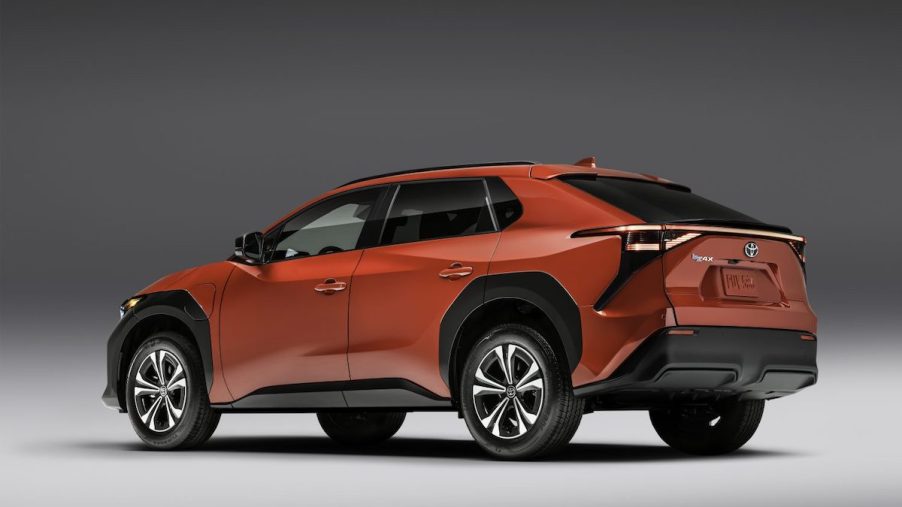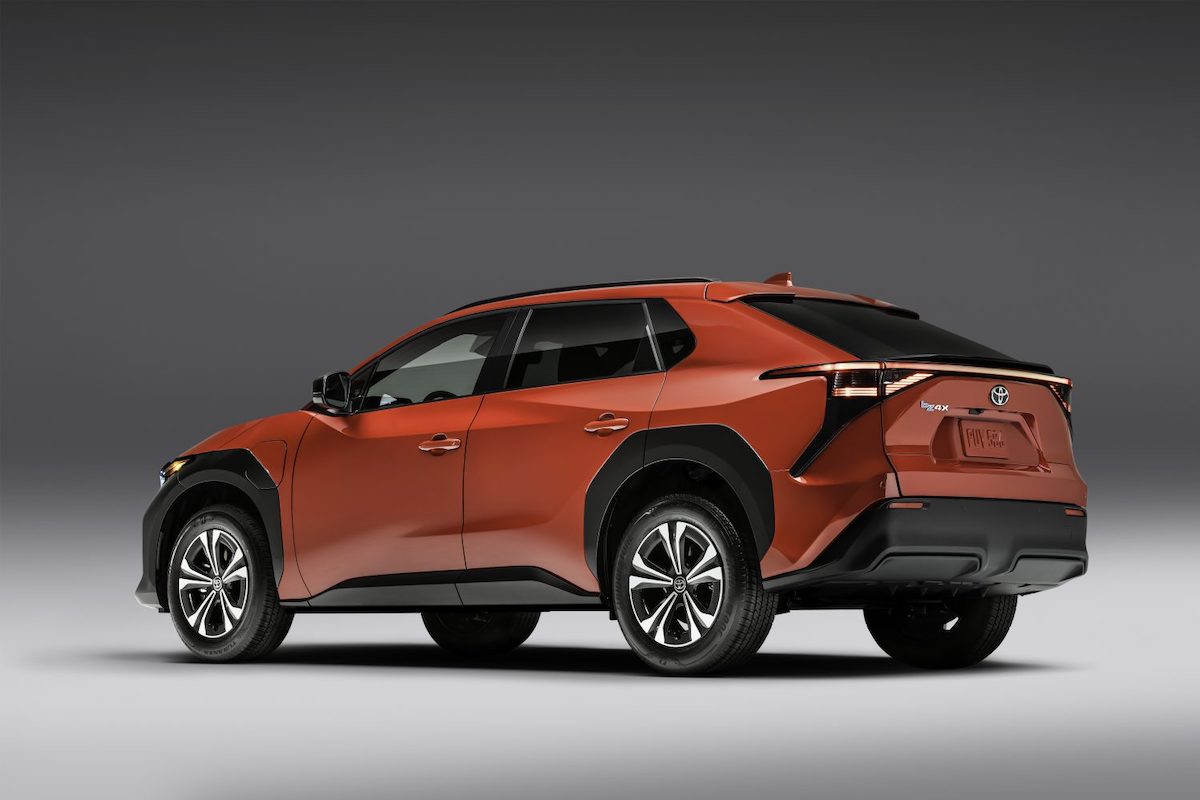
5 Really Annoying 2023 Toyota bZ4X Features
Toyota has finally unveiled its first fully electric vehicle. The 2023 Toyota bZ4X is an admirable entrant in an increasingly crowded field. But it’s far from flawless. If you can get past the clunky name, several issues might keep you from signing on the dotted line. Here are five of the most annoying things about the 2023 Toyota bZ4X.
1. Cheap body cladding

Toyota offers a respectable EV by the numbers. A single-motor front-wheel-drive version makes 201 hp and 196 lb-ft of torque, while the dual-motor all-wheel-drive version produces 214 hp and 248 lb-ft of torque. The former gets 252 miles of range on a full charge, which drops by 10 mph for the AWD bZ4X. Charging a bZ4X to 80% capacity takes roughly an hour. And a partnership with EVgo gives buyers a free year’s worth of charging.
Toyota rounds out its new EV with a 12.3-inch touchscreen, along with Android Auto and Apple CarPlay integration. Though the bZ4X is comparable in many ways to other EVS, the automaker does it no favors with black body cladding that doesn’t match the body color (unless you choose black exterior paint). You might expect this cheap-looking finish on the base model, but it’s on even the highest trim.
With its prominent black cladding, the bZ4X promptly falls into the class of vehicles for which the exterior styling is immediately hate-it or love-it. It would be one thing if it were optional or limited to one trim. Unfortunately, it’s not.
2. Unfortunate instrument panel placement
Toyota doesn’t make it easy to test drive a bZ4X, as its design and tech aren’t ideal. In the driver’s seat, you’ll find that the top of the steering wheel might block the instrumentation panel. Carwow automotive journalist Mat Wilson points out that the wheel blocks the panel when the driver’s seat is upright and the adjustable steering column is moved up to match.
For taller drivers, this obstruction could be a real problem. The bZ4X does provide a fair amount of adjustment in the front seat and a telescoping wheel to match.
But for bZ4X drivers over 6 feet tall, the ideal driving position could block critical indicators. That obstruction, at the wrong time, could prove dangerous. At the very least, it’s absolutely annoying.
3. Huge rear blind spots
Watson also rightly notes the 2023 Toyota bZ4X has huge rear blind spots. The rear windshield lacks a wiper, which can hamper visibility in inclement weather. And for a new EV, this omission seems a bit surprising. Rear windshield wipers are increasingly standard on SUVs, yet their absent from all BZ4X trims.
Further hindering visibility is the BZ4X’s steep rear window. This design feature makes it more difficult for the driver to see out the back, even when the weather is clear. The rear window design and lack of wipers could be deadly in a thunderstorm.
As if those issues weren’t enough, large rear windshield pillars make outward visibility even more challenging.
4. Poor camera resolution
The bZ4X is the first vehicle to include Toyota Safety Sense 3.0 — the auto giant’s newest suite of advanced driver-assistance systems. It includes lane-keeping assistance, blind-spot monitoring, and detection systems for guardrails, cyclists, and motorcyclists. Every model also comes with a rear backup camera, and the Limited trim boasts a 360-degree camera.
You’d hope the backup camera might offset the above-mentioned rear visibility issues. But its quality is terrible. Watson notes the camera has “the lowest def I’ve ever seen in my life.”
That’s disappointing, especially given that Toyota Safety Sense 3.0 abounds with excellent advanced safety features. But you’ll need to make ample use of the vehicle’s mirrors and take extra caution when reversing, given the camera’s low definition.
5. Odd 1-pedal driving
Watson is slightly more positive about the bZ4X’s performance and handling. And he isn’t alone. For example, reviewers at Car and Driver note that although the bZ4X can’t outpower a Tesla, the 6.4 seconds the Toyota takes to hit 60 mph is respectable. And along with providing responsive steering, the bZ4X insulates rides from the jolts of bumpy roads fairly well.
Toyota also added regenerative braking to its all-new EV. If you’re unfamiliar with this feature, it leverages the energy used when braking to charge your vehicle. When the driver pumps the brake, the friction between the pads and rotors slows the vehicle. The car heats up from the kinetic energy generated by the car’s motion, and usually, this energy is lost. But a regenerative braking system harnesses that energy to charge the battery.
In some EVs, regenerative braking is accompanied by one-pedal driving. Press the gas pedal to accelerate, and take your foot off to engage regenerative braking. But unfortunately, as Watson mentions during his test drive, when the driver removes their foot from the gas pedal, the EV continues to move slowly instead of stop. Thankfully, one pedal driving is an option on the bZ4X, activated by a button on the center console. It might best be avoided until Toyota refines the feature in subsequent bZ4Xs.


